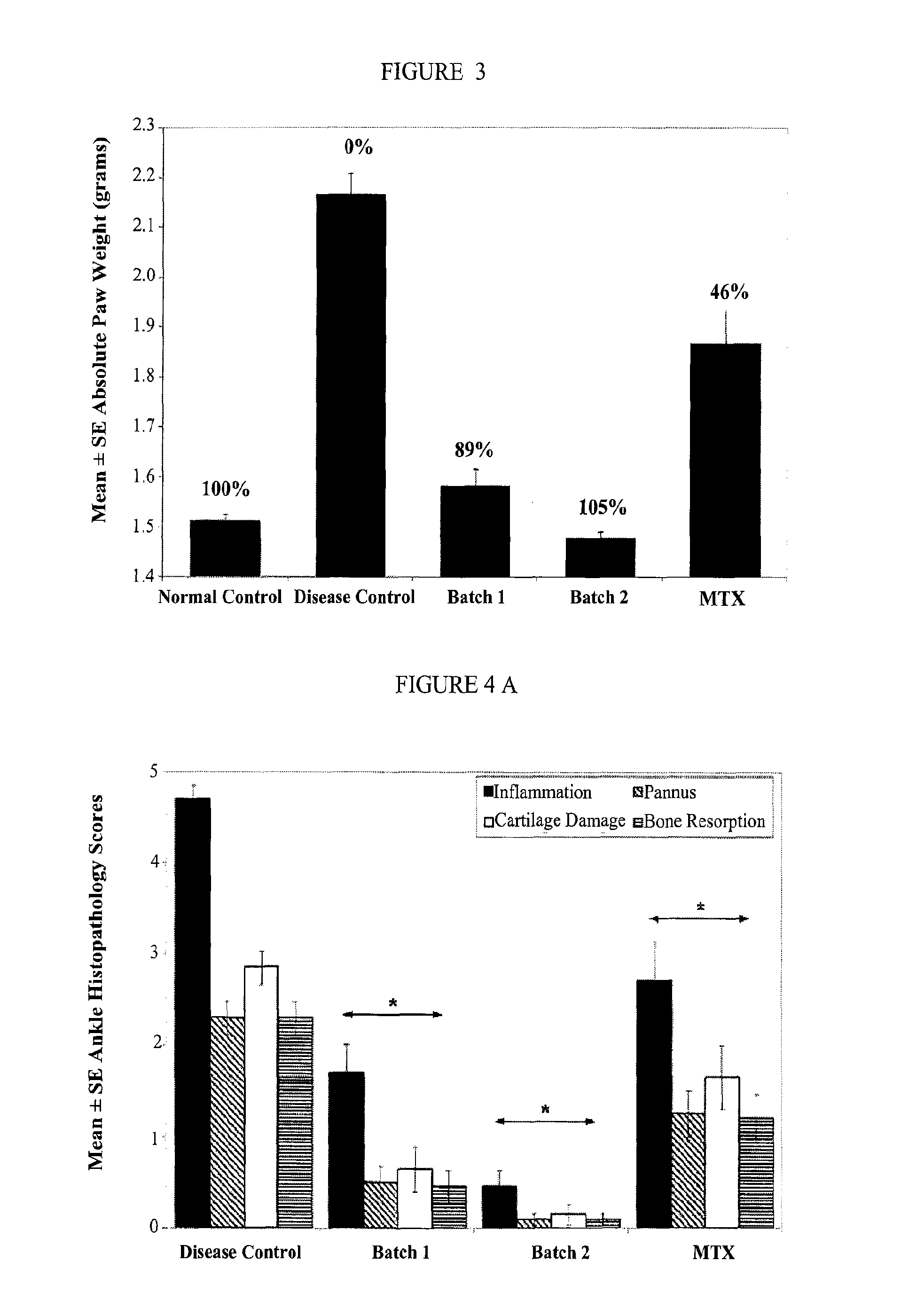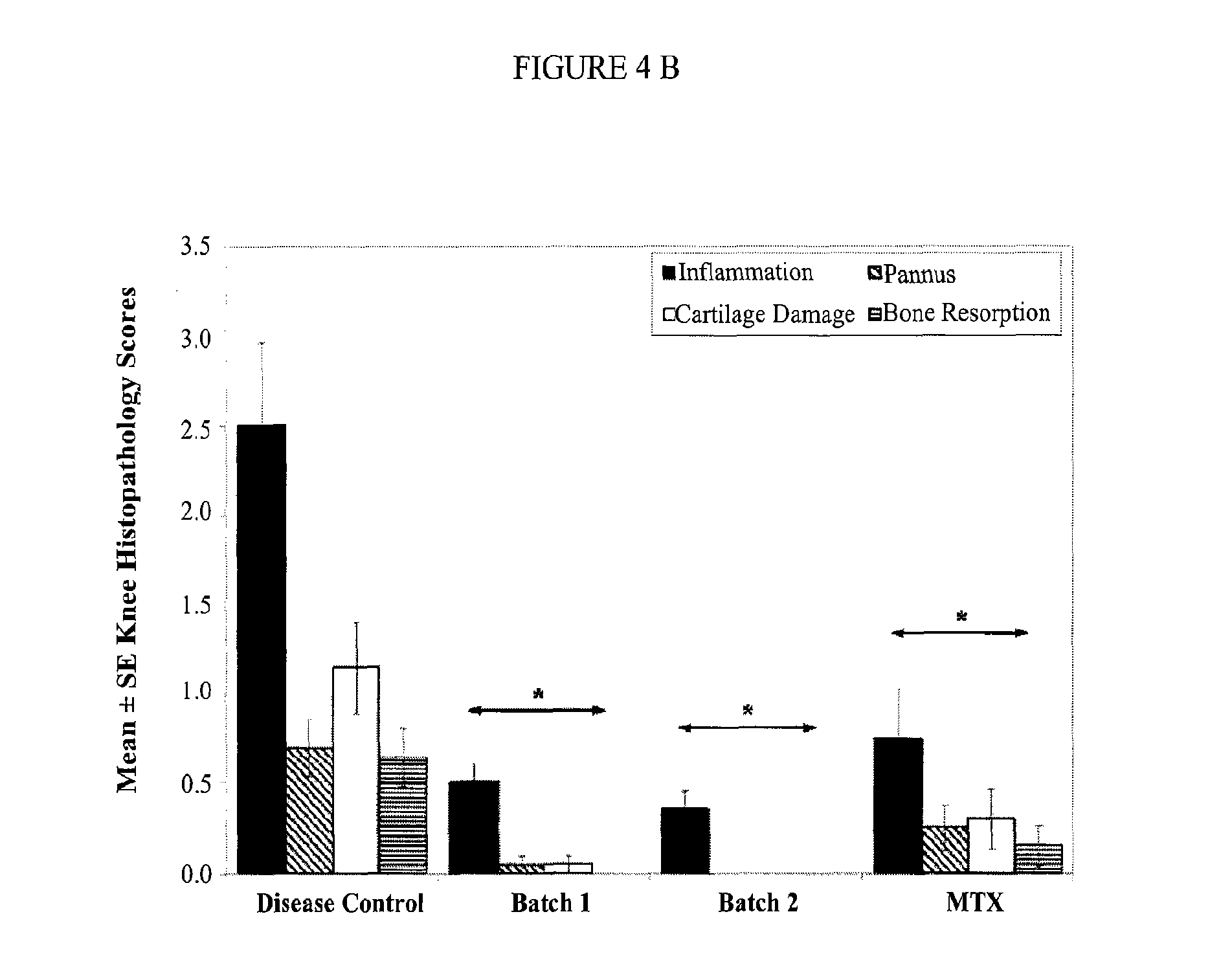Methods of treating autoimmune disorders and/or inflammatory disorders
a technology for inflammatory disorders and autoimmune disorders, applied in the field of dendrimer compositions, can solve the problems of patients still experiencing pain and joint degeneration, substantial loss of functioning and mobility, and close supervision
- Summary
- Abstract
- Description
- Claims
- Application Information
AI Technical Summary
Benefits of technology
Problems solved by technology
Method used
Image
Examples
example 1
[0150]Previous experiments involving dendrimer related technologies are located in U.S. Pat. Nos. 6,471,968, 7,078,461, and U.S. patent application Ser. Nos. 09 / 940,243, 10 / 431,682, 11,503,742, 11,661,465, 11 / 523,509, 12 / 403,179, 12 / 106,876, 11 / 827,637, and 61 / 101,461; and U.S. Provisional Patent Application Ser. Nos. 61 / 256,759, 61 / 140,840, 61 / 091,608, 61 / 097,780, 61 / 101,461, 61 / 237,172, 61 / 229,168, 61 / 221,596, and 61 / 251,244; each herein incorporated by reference in their entireties.
example 2
SYNTHESIS OF G(5) PAMAM dendrimer
Scheme 1
[0151]Step 1: Synthesis of G(-0.5) PAMAM Dendrimer
[0152]Ethylene diamine (5 g) in methanol (20 ml) was added dropwise to a stirred solution of methyl acrylate (35 g) in methanol (20 ml) at 0° C. under nitrogen over 2 hours. The mixture was stirred for 30 min at 0° C. and then allowed to warm to room temperature (˜25° C.) and stirred for a further 24-48 hours. The solvent was removed under reduced pressure at 40° C. using a rotary evaporator and the resulting colorless oil dried under vacuum overnight to give G(−0.5).
[0153]
[0154]Step 2: Synthesis of G(0) PAMAM Dendrimer
[0155]A solution of G(−0.5) was reacted with an excess of ethylene diamine in MeOH at 0° C. The rate of addition was such that temperature rise was kept to a minimum. The reaction was continued until no ester groups were detectable by NMR. The solvent was removed under reduced pressure maintaining the temperature below 40° C. Excess EDA was removed using an azeotropic mixture of...
example 3
[0173]The efficacy of ATI-101 was evaluated using the rat collagen arthritis model in a series of experiments described below. Rat collagen induced arthritis is an experimental model of polyarthritis that has been widely used for preclinical testing of numerous anti-arthritic agents. Rat type II collagen arthritis results when rats are immunized against homologous or heterologous type II collagen. The resulting arthritis was characterized by reliable onset and progression of robust, easily measurable, polyarticular inflammation, marked cartilage destruction in association with pannus formation and mild to moderate bone resorption and periosteal bone proliferation. For all examples below statistical analysis of body / paw weights, paw AUC parameters and histopathologic parameters were evaluated using a Student's t-test with significance set at the 5% significance level. As used herein “significant” means that p≦0.05. Unless specified as “normal control” or “disease control” reference t...
PUM
| Property | Measurement | Unit |
|---|---|---|
| diameter | aaaaa | aaaaa |
| temperature | aaaaa | aaaaa |
| temperature | aaaaa | aaaaa |
Abstract
Description
Claims
Application Information
 Login to View More
Login to View More - R&D
- Intellectual Property
- Life Sciences
- Materials
- Tech Scout
- Unparalleled Data Quality
- Higher Quality Content
- 60% Fewer Hallucinations
Browse by: Latest US Patents, China's latest patents, Technical Efficacy Thesaurus, Application Domain, Technology Topic, Popular Technical Reports.
© 2025 PatSnap. All rights reserved.Legal|Privacy policy|Modern Slavery Act Transparency Statement|Sitemap|About US| Contact US: help@patsnap.com



